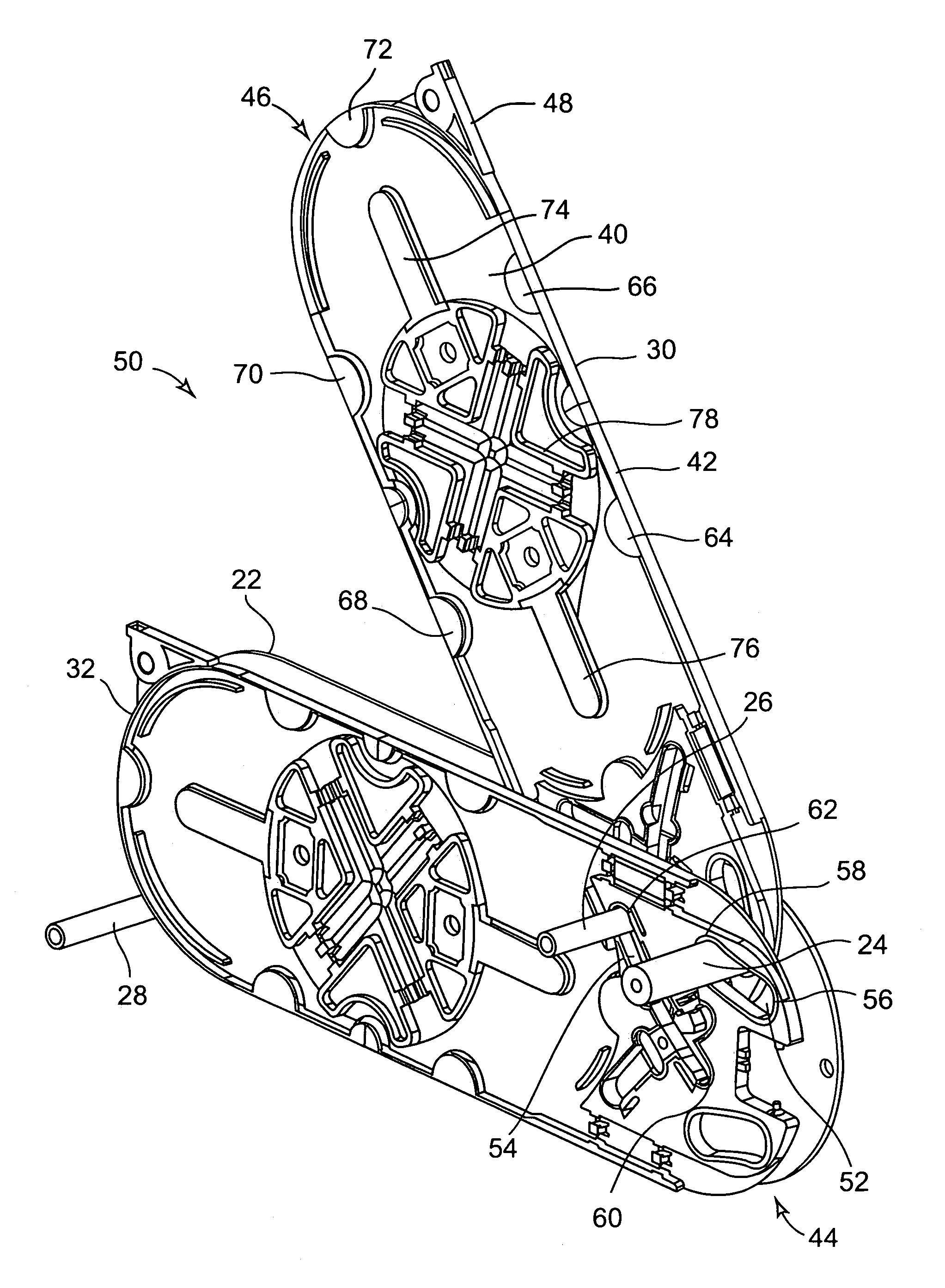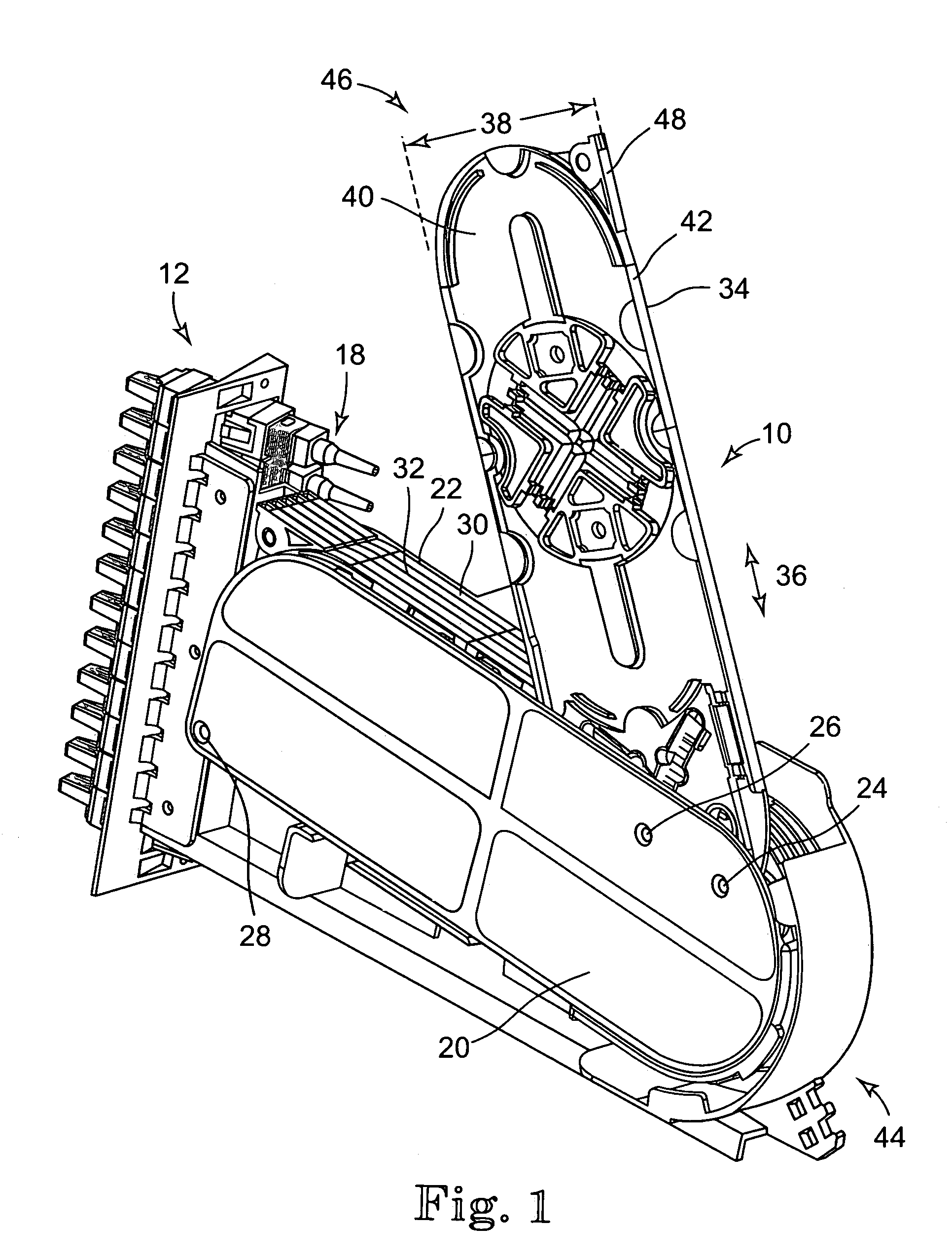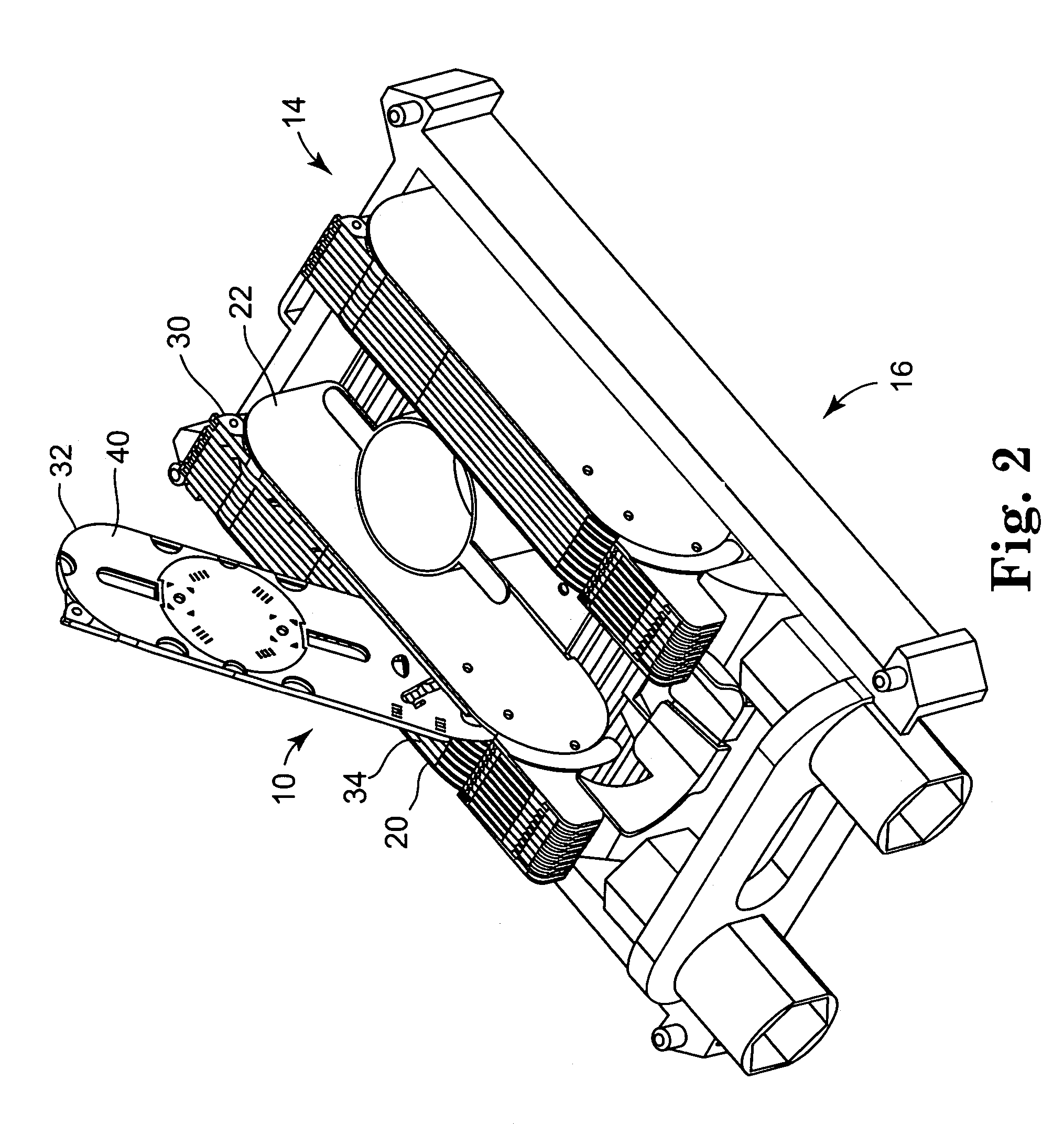Array of fiber optic splicing cassettes
- Summary
- Abstract
- Description
- Claims
- Application Information
AI Technical Summary
Benefits of technology
Problems solved by technology
Method used
Image
Examples
Embodiment Construction
[0030]Arrays of cassettes for the management of optical fibers can be seen in FIGS. 1 and 2. In FIG. 1 the array 10 is mounted into an assembly 12, which is supposed to be placed onto a modular optical distribution frame (MODF) or a 483.6 mm (19 inch) rack or the like. FIG. 2 shows the same array 10 and a second array of the same kind 14 arranged in a common holding device 16 that for example can be part of a splice body for the splicing of two cables containing a multiplicity of optical fibers. FIG. 1 shows on the left side a multiplicity of fiber optic connectors 18, the fibers (not shown) are guided into the array of cassettes 10 to be spliced with incoming fibers. This is generally well known and therefore no further reference will be made to the specific embodiments of the array of cassettes 10, 14 in the environments as shown in FIGS. 1 and 2.
[0031]In the following reference will only be made to the array of cassettes utilizing the same numerals as in FIGS. 1 and 2. The array ...
PUM
 Login to View More
Login to View More Abstract
Description
Claims
Application Information
 Login to View More
Login to View More - R&D
- Intellectual Property
- Life Sciences
- Materials
- Tech Scout
- Unparalleled Data Quality
- Higher Quality Content
- 60% Fewer Hallucinations
Browse by: Latest US Patents, China's latest patents, Technical Efficacy Thesaurus, Application Domain, Technology Topic, Popular Technical Reports.
© 2025 PatSnap. All rights reserved.Legal|Privacy policy|Modern Slavery Act Transparency Statement|Sitemap|About US| Contact US: help@patsnap.com



